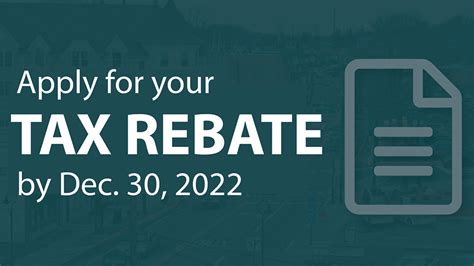Maximize Your Savings: Everything You Need to Know About the 2025 Anchor Tax Rebate
The 2025 Anchor Tax Rebate is designed to relieve the financial burden on eligible taxpayers by easing the costs associated with homeownership and rental expenses. In this article, we’ll explore the key aspects of the Anchor Tax Rebate, including eligibility requirements, application processes, and tips to maximize your savings. Whether you’re a homeowner or a renter, understanding this program is essential for taking full advantage of the available benefits.
What is the Anchor Tax Rebate?
The Anchor Tax Rebate, introduced by the government, is a financial relief program aimed at supporting individuals and families in managing their housing expenses. This rebate offers cash back to eligible residents based on either their property taxes or net rental costs. The goal is to help alleviate some of the financial pressures associated with living expenses, especially in an ever-increasing cost-of-living environment.
Who is Eligible for the Rebate?
Eligibility for the 2025 Anchor Tax Rebate primarily depends on two factors: your income level and your housing status—whether you own a home or rent. Here are the general eligibility criteria:
- Income Limits: The rebate is income-tested, meaning that individuals or families wishing to apply must fall below a certain income threshold. As of 2025, the annual income limit for eligibility is typically set around $150,000 for individuals and $250,000 for families.
- Property Ownership: Homeowners must show proof of property taxes paid. The rebate amount is usually based on a percentage of property taxes, providing financial relief tailored to the homeowner’s expenses.
- Renters: Renters can apply for assistance if they can provide documentation of their rental payments. The rebate for renters is typically calculated based on a percentage of the net rental costs.
How to Apply for the Anchor Tax Rebate
The application process for the Anchor Tax Rebate is straightforward but requires careful attention to detail. Here are the steps you need to follow:
- Gather Necessary Documents: Collect your income statements, proof of property taxes (for homeowners), or rental agreements and receipts (for renters).
- Fill Out the Application Form: You can find the application form on the official government website or your local tax office. Ensure that all required fields are completed accurately.
- Submit Your Application: Applications can typically be submitted online, by mail, or in person, depending on the jurisdiction. Be mindful of submission deadlines to ensure your application is considered.
- Track Your Application: After submission, you can track the status of your application through your local tax authority’s website or by contacting their office directly.
When Will You Receive Your Rebate?
The timeline for receiving the Anchor Tax Rebate can vary based on the volume of applications and the specific processes of your local tax authority. Generally, applicants can expect to receive their rebate within a few months after submission. It’s important to keep an eye on any communications from the tax authority for updates on your application status.
Maximizing Your Savings
To make the most out of the 2025 Anchor Tax Rebate, consider the following tips:
- Keep Records: Maintain detailed records of all housing expenses, including property taxes paid and rental payments. This will aid in the accurate completion of your application.
- File Taxes Promptly: Ensure that you file your taxes on time, as your income information is vital for determining eligibility and rebate amounts.
- Confirm Eligibility Annually: The eligibility criteria may change year over year. Stay updated on any changes to the income limits or qualifying expenses.
- Consult with Professionals: If you’re unsure about the application process or eligibility status, consider consulting a tax professional for guidance.
Conclusion
The 2025 Anchor Tax Rebate is an opportunity for eligible individuals and families to save significantly on their housing costs. By understanding the eligibility requirements, application process, and strategies to maximize your savings, you can ensure that you benefit from this valuable program. Stay informed, keep your documents organized, and don’t hesitate to seek professional assistance when needed. Every dollar counts towards creating a more secure financial future.
FAQs
1. What is the maximum amount I can receive through the Anchor Tax Rebate?
The maximum rebate amount can vary based on factors such as your property taxes or rental costs. It is typically a percentage of these costs, and specific amounts can be found on your local tax authority’s website.
2. Can I apply for the rebate online?
Yes, most jurisdictions allow applications to be submitted online. Check your local tax office’s website for specific instructions and applications.
3. Will my rebate be taxed as income?
No, generally, rebates received under programs like the Anchor Tax Rebate are not considered taxable income. However, it’s wise to consult with a tax professional for specific advice on your situation.
4. Is there a deadline to apply for the Anchor Tax Rebate?
Yes, each jurisdiction typically sets a deadline for submitting applications, often around the end of the tax year. Make sure you are aware of the deadlines to avoid missing out.
5. What should I do if my application is denied?
If your application is denied, you should receive a reason for the denial. You can then review the reason and, if you believe you are eligible, consider appealing the decision or contacting your local tax office for clarification.
Download Anchor Tax Rebate 2025
